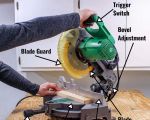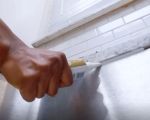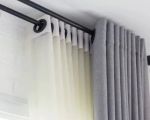How to Install Electrical Outlets with Minimal Tools
When it comes to home improvement, installing an electrical outlet is one of those essential tasks that every homeowner should learn. It’s not only practical, but it can also save you money by reducing the need for an electrician. The best part? You can do it with just a few basic tools, saving both time and effort. In this guide, I’ll walk you through the process of installing an electrical outlet with minimal tools, ensuring safety and functionality. Whether you’re upgrading your space or replacing a faulty outlet, this step-by-step guide will help you get the job done effectively.
Essential Tools for the Job
Before starting, make sure you have the following minimal tools to install your outlet:
- Flathead screwdriver
- Phillips screwdriver
- Wire stripper
- Voltage tester
- Needle-nose pliers
- Utility knife (optional)
These tools are enough to handle most standard outlet installations. You don’t need an extensive toolkit, just a few essentials to ensure a safe and efficient installation.
Step 1: Safety First
Before you even begin, safety should always come first. Make sure the power is off to the area you’re working on. Use a voltage tester to double-check that the circuit you’re working on is not live. Once confirmed, go ahead and switch off the breaker for the area where you'll be installing the outlet.
Remember: electrical work can be dangerous if proper precautions are not taken. If you feel unsure at any point, it’s always safer to consult a professional. However, if you follow these steps carefully, you should be able to complete the job successfully and safely.
Step 2: Remove the Existing Outlet
If you're replacing an old or faulty outlet, start by removing the cover plate. Use your flathead screwdriver to unscrew the plate. Once removed, you'll see the screws that hold the outlet in place. Use your Phillips screwdriver to unscrew the outlet and gently pull it out from the wall. Be mindful of the wires connected to the outlet as you pull it out.
Step 3: Disconnect the Wires
With the outlet pulled out, you’ll see the wires attached to it. You should have three types of wires: the hot (black), neutral (white), and ground (green or bare). Use your needle-nose pliers or wires strippers to carefully disconnect the wires. Take note of which wire goes where; this will be important when you connect the new outlet.
If the wires are too short or damaged, you might need to trim and strip them before attaching them to the new outlet. A utility knife can be helpful here for safely removing the insulation from the wires.
Step 4: Install the New Outlet
Now it’s time to install your new outlet. Start by connecting the wires to the corresponding terminals on the new outlet. The black wire (hot) should go to the brass or gold screw, the white wire (neutral) to the silver screw, and the ground wire to the green screw. Use your Phillips screwdriver to secure the wires tightly to the terminals.
Once the wires are securely connected, gently push the outlet back into the electrical box, ensuring that the wires are not pinched. Use your Phillips screwdriver to screw the outlet into place within the electrical box.
Step 5: Replace the Cover Plate
After the outlet is installed and secured, you can replace the cover plate. Simply align it with the screw holes and screw it into place. Be careful not to overtighten, as this could damage the plate or the outlet.
Step 6: Turn the Power Back On
Now that everything is installed, go back to your breaker panel and turn the power back on. Use your voltage tester once more to ensure the outlet is live. If everything checks out, you’ve successfully installed your new outlet!
Common Issues to Watch Out For
While installing an outlet might seem straightforward, there are a few common issues to watch out for:
- Loose Connections: If the wires are not securely attached to the terminals, the outlet may not work properly or could cause sparks, posing a fire risk. Double-check each wire’s connection.
- Improper Grounding: Failing to connect the ground wire properly can lead to safety hazards. Always ensure the ground wire is attached to the green screw.
- Worn or Frayed Wires: Damaged wires should be replaced, as they can be dangerous. If you encounter any such wires, use a wire cutter and strip them properly before attaching them to the new outlet.
Why You Should Use Minimal Tools for Outlet Installation
Using minimal tools for installing electrical outlets offers several advantages:
- Cost-Effective: You don’t need to purchase an expensive toolbox or hire a professional when you can do the job yourself with just a few essential tools.
- Convenience: The tools required for outlet installation are basic and easy to store, making it convenient for small home repairs or upgrades.
- Efficiency: Having the right tools allows you to work quickly and effectively, reducing the time spent on installation.
Additionally, having minimal tools means less clutter in your toolbox and greater focus on the task at hand. With practice, you can install outlets with confidence, ensuring both safety and efficiency in your home electrical projects.
If you’re looking for high-quality tools and materials for your electrical work, visit ToolNest for all the essentials to make your home repairs even easier.









